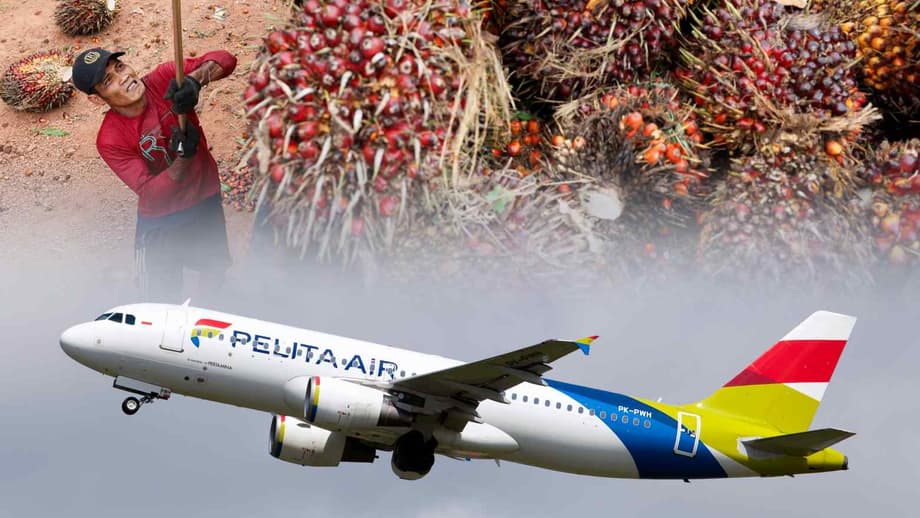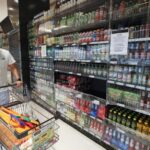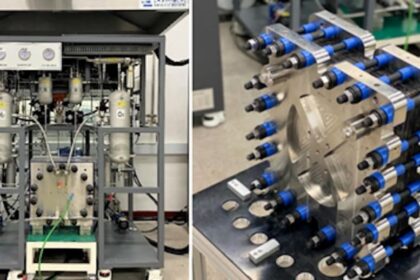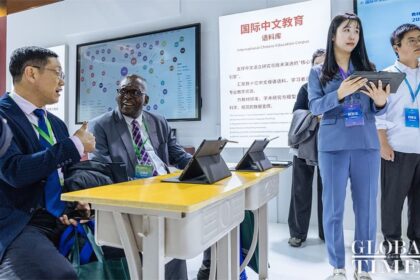Indonesia accelerates sustainable aviation fuel push
Indonesia says it will bring palm oil based sustainable aviation fuel to market within the next two to three years. Coordinating Minister for Economic Affairs Airlangga Hartarto outlined the timeline as state energy company Pertamina continues flight and engine tests with Pelita Air, Garuda Indonesia and Citilink. The effort seeks to cut carbon emissions from aviation, build a domestic market for sustainable fuel and reduce reliance on imported fossil jet fuel.
- Indonesia accelerates sustainable aviation fuel push
- What is palm oil SAF and how it is produced
- From test flights to scheduled service
- Can palm oil based fuels cut aviation emissions
- Supply, scale and cost
- What commercialization in 2 to 3 years would look like
- Environmental and trade headwinds
- Indonesia’s partnerships and policy toolkit
- What it means for airlines and travelers
- The Bottom Line
The country is the worlds largest producer of palm oil. That scale gives Indonesia a chance to secure feedstock for early volumes while it works on strict sustainability standards. The move sits inside a broader energy transition agenda that includes more biofuels, new power projects and partnerships with international financiers. For aviation, the aim is to prove regular supply at commercial scale, then expand blends gradually on scheduled flights.
Indonesia already crossed an early milestone. In October 2023, national carrier Garuda Indonesia operated a Boeing 737 800 NG from Jakarta to Surakarta with a palm oil blended fuel on board after a series of engine ground tests and a dedicated test flight. The route spans roughly 550 kilometers and carried more than 100 passengers, showing that the fuel can be used safely within current aircraft and airport systems.
What is palm oil SAF and how it is produced
Sustainable aviation fuel is a jet fuel made from renewable sources that can be used in existing aircraft and fuel infrastructure. When blended to approved limits, it becomes a drop in jet fuel that meets the same quality standards as conventional Jet A 1. The difference is in the life cycle emissions. If the feedstock is sustainable and land use impacts are avoided, total greenhouse gas emissions from production to combustion can be lower than fossil jet fuel.
How the HEFA route works
Most early sustainable aviation fuel comes from a process called HEFA, short for hydroprocessed esters and fatty acids. In this route, natural oils such as palm kernel oil and used cooking oil are cleaned, then reacted with hydrogen under high pressure to create a paraffinic fuel. That product is then blended with conventional jet fuel to meet strict aircraft and engine specifications.
Pertamina produces this type of fuel at its Cilacap refinery in Central Java. The company has also demonstrated co processing, where a small share of biogenic oil is processed with petroleum streams in the same unit. Company statements have cited a co processing line at Cilacap with a capacity of about 1,350 kiloliters a day, although actual output depends on how the unit is configured and operated over time.
From test flights to scheduled service
Indonesia has been building toward commercial use for several years. In 2021, a CN 235 aircraft built by state owned manufacturer Dirgantara Indonesia completed a Bandung to Jakarta test flight on a palm oil based blend. Two years later, Garuda Indonesia flew the Jakarta to Surakarta rotation with passengers on board using the same class of fuel. Ahead of that flight, technicians completed engine ground tests to confirm that performance, emissions and fuel system behavior were within normal limits.
Testing has expanded across the domestic industry. Pertamina has worked with Pelita Air, Garuda Indonesia and low cost carrier Citilink to evaluate the fuel and plan logistics from refinery to airport storage. Garuda executives have said they are discussing the commercial terms needed to make the fuel viable for routine operations, including secure supply and predictable pricing.
Indonesia set a policy target of a 3 percent blend for jet fuel by 2020. Implementation was postponed as the industry focused on testing and on building supply chains. The current two to three year commercialization plan points to an initial launch period with limited volumes and selected routes, followed by wider deployment if costs and reliability improve.
Can palm oil based fuels cut aviation emissions
Lifecycle analysis is central to the climate value of sustainable aviation fuel. Palm oil based fuel can deliver lower emissions than fossil fuel when grown on existing plantations with strict protections for forests and peatlands. The benefits increase when the feedstock is a waste stream, such as used cooking oil, because no new land is required. The main risk is indirect land use change, where new demand pushes cultivation into high carbon areas.
Environmental concerns have shaped market access. The European Union has placed restrictions on palm oil in transport energy because of deforestation risk. Aviation buyers in many regions are also adopting sustainability certifications and traceability rules that screen for labor and land use issues. Indonesian officials say domestic standards and monitoring will ensure that supply for aviation meets these expectations.
Airlines view sustainable aviation fuel as the primary lever for decarbonizing long haul flying where batteries and hydrogen are not yet practical. Industry groups estimate that aviation will need about 450 billion liters of sustainable fuel a year by 2050 to meet net zero plans. That volume far exceeds current production. It means many feedstocks and technologies will be required, including agricultural residues, municipal waste and power to liquid fuels made from green hydrogen and captured carbon.
Supply, scale and cost
Scaling supply is both an engineering and a logistics challenge. Pertamina has developed production at Cilacap and is extending a used cooking oil to aviation fuel initiative, with plans to expand processing to Dumai in Riau and Balongan in West Java. Building reliable chain of custody from plantation or collector to refinery, then to airport tanks, is essential so that buyers can verify sustainability claims.
Cost remains the toughest barrier. Sustainable aviation fuel today often sells at a premium of two to five times the price of conventional jet fuel depending on region and pathway. Airlines can close that gap through a mix of mandates, tax credits, offtake contracts, and book and claim certificates that allow a buyer in one place to pay for fuel produced and consumed in another. International schemes like CORSIA create demand for lower carbon fuel by requiring airlines to offset growth in emissions.
Indonesia is also tapping international partnerships to speed up investment. Under the Asia Zero Emission Community framework, Jakarta and Tokyo are working with the Japan Bank for International Cooperation on a set of projects that include sustainable aviation fuel. Indonesian officials have placed SAF in the group of projects judged commercially viable, reflecting confidence that domestic supply can move beyond pilot scale.
What commercialization in 2 to 3 years would look like
A realistic launch would start with targeted routes from major hubs such as Jakarta and Surabaya, supplied by periodic batches from Pertamina refineries. Airlines would sign offtake agreements that lock in volume and price formulas for several years. Ground handlers would blend product to certified levels and manage quality control, while airlines track emissions reductions for their sustainability reports and corporate customers.
On the technical side, producers must keep fuel within the ASTM specifications that govern drop in jet fuel. Regulators at the Directorate General of Civil Aviation will oversee safety approvals, while engine makers continue routine checks to confirm that performance and maintenance intervals are unchanged. Because the fuel is drop in, pilots and passengers would not notice any operational difference.
The government may also reintroduce a modest blending requirement to anchor demand in the early phase, paired with fiscal support to close the price gap. If these steps hold, airlines could progress from occasional use on select flights to scheduled consumption across parts of their domestic networks.
Environmental and trade headwinds
The path is not free of risk. Airlines that connect to Europe face strict rules on feedstock sustainability and may hesitate to use fuel that is not eligible for credit in those markets. Consumer scrutiny of palm oil remains strong in some countries. Indonesian producers will need to show that aviation demand does not drive new clearing of forests, that labor standards are respected, and that smallholders benefit from better yields on existing land.
Industry leaders say the recent test flights demonstrate practical progress. Taufik Aditiyawarman, executive director at Pertamina subsidiary Kilang Pertamina Internasional, described the used cooking oil program and earlier palm kernel oil trials as evidence that sustainable fuel can be made at home. He said the two public trials, including the 2021 CN 235 flight and the 2023 Garuda flight, move the idea from lab to runway.
‘This USAF project is tangible proof of our commitment to develop a sustainable, low carbon energy portfolio.’ He added, ‘The two trials prove that plant based aviation fuel is no longer just a concept. It has now become a reality.’
At the same time, environmental groups urge stronger safeguards. Independent certification such as RSPO and the national ISPO standard, satellite monitoring of land cover, and transparent mill level reporting can help assure buyers that the climate gains from sustainable aviation fuel are real. Policymakers will also weigh the balance between domestic use and export demand for feedstocks like used cooking oil.
Indonesia’s partnerships and policy toolkit
Senior ministers have highlighted used cooking oil as a promising feedstock because it is a waste stream and avoids land use change. They have noted that much of the collected volume is currently exported. Jakarta plans to use more of it at home as plants scale up. Testing has extended to CFM56 7B engines that power the Boeing 737 800 fleet, which supports confidence in everyday operations.
Officials have said the country aims to showcase progress at events like the Bali Air Show. Beyond publicity, the policy toolkit may include fiscal incentives for producers, mechanisms to certify sustainability, and support for research into alternative pathways such as alcohol to jet and power to liquid synthetic kerosene. Each element reduces risk for investors who are deciding where to build new capacity.
What it means for airlines and travelers
For travelers, flights using a sustainable fuel blend will feel the same as any other trip. There is no change to safety procedures or in flight performance. The difference sits in the fuel supply chain and in the emissions accounting that airlines use to track progress.
Short term, fares may reflect some of the higher cost of low carbon fuel. Airlines often route that cost to corporate customers through certificate deals or to specific green fares, while governments can cushion the impact through incentives. Over time, new refineries, better yields and competition among producers can narrow the price gap.
For Indonesian aviation, a reliable domestic supply would support carriers as they renew fleets and expand networks. For the global market, new volumes from Indonesia would add another option in a sector that needs many sources of supply to reach climate goals.
The Bottom Line
- Indonesia targets commercialization of palm oil based sustainable aviation fuel within two to three years.
- Pertamina has conducted tests with Pelita Air, Garuda Indonesia and Citilink, including a 2023 Garuda passenger flight on a palm oil blend.
- The fuel is produced via the HEFA pathway at the Cilacap refinery using palm kernel oil and used cooking oil, with a reported co processing line at about 1,350 kiloliters a day.
- A previous 3 percent jet fuel blend target set for 2020 was postponed, and a new launch phase would start with selected routes and limited volumes.
- Lifecycle emissions benefits depend on feedstock and land use; EU restrictions on palm oil reflect deforestation concerns.
- Indonesia is working with Japan through the AZEC framework, while Pertamina expands initiatives to Dumai and Balongan.
- Pricing support, offtake agreements and certification systems will determine how quickly airlines can adopt the fuel.
- Experts estimate aviation will need about 450 billion liters of sustainable fuel a year by 2050 to meet net zero plans.












